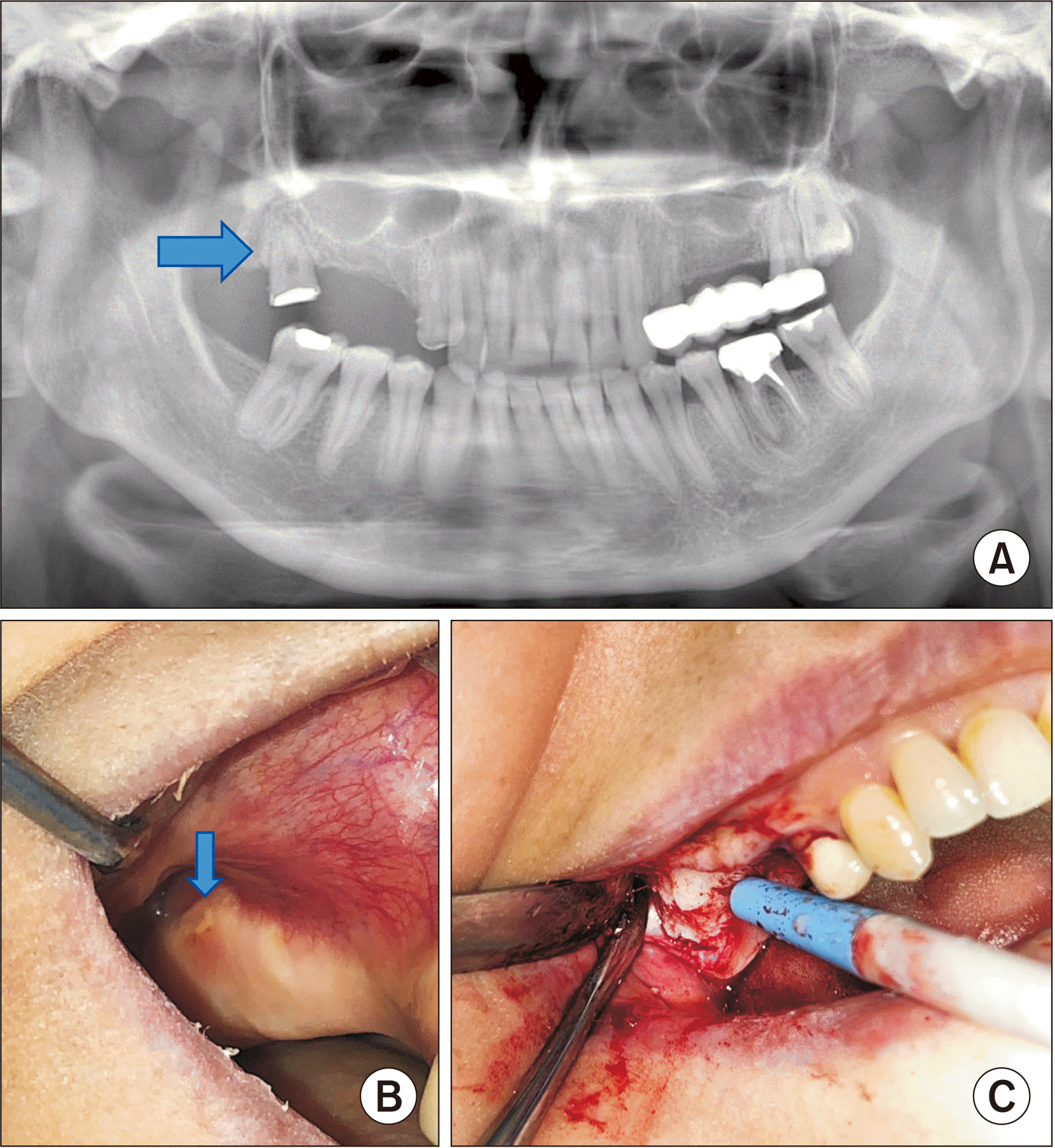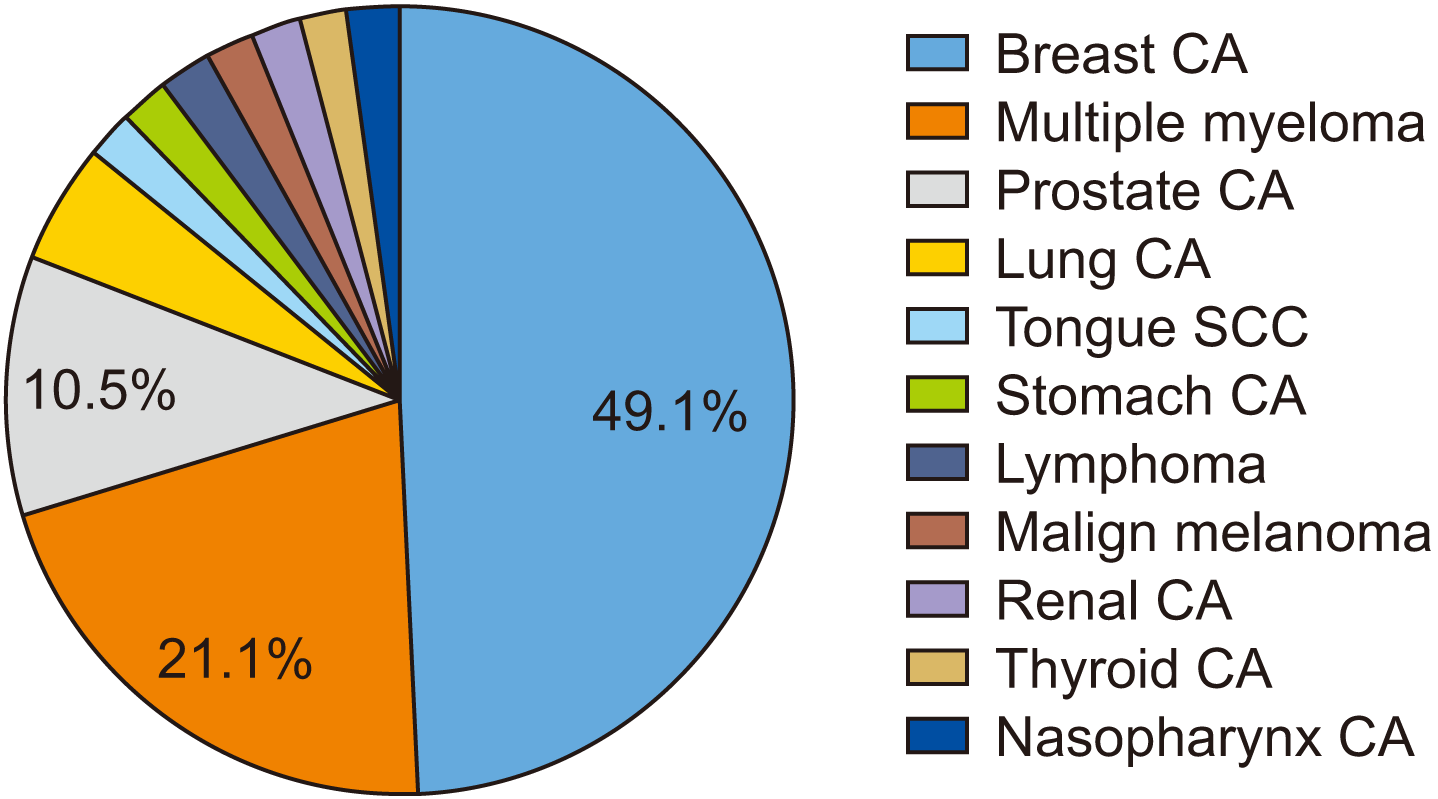1. Berenson JR, Hillner BE, Kyle RA, Anderson K, Lipton A, Yee GC, et al. 2002; ; American Society of Clinical Oncology Bisphosphonates Expert Panel. American Society of Clinical Oncology clinical practice guidelines: the role of bisphosphonates in multiple myeloma. J Clin Oncol. 20:3719–36.
https://doi.org/10.1200/jco.2002.06.037. DOI:
10.1200/JCO.2002.06.037. PMID:
12202673.

3. Hillner BE, Ingle JN, Chlebowski RT, Gralow J, Yee GC, Janjan NA, et al. 2003; ; American Society of Clinical Oncology. American Society of Clinical Oncology 2003 update on the role of bisphosphonates and bone health issues in women with breast cancer. J Clin Oncol. 21:4042–57.
https://doi.org/10.1200/jco.2003.08.017. DOI:
10.1200/JCO.2003.08.017. PMID:
12963702.

7. Ruggiero SL, Dodson TB, Fantasia J, Goodday R, Aghaloo T, Mehrotra B, et al. 2014; ; American Association of Oral and Maxillofacial Surgeons. American Association of Oral and Maxillofacial Surgeons position paper on medication-related osteonecrosis of the jaw--2014 update. J Oral Maxillofac Surg. 72:1938–56.
https://doi.org/10.1016/j.joms.2014.04.031. DOI:
10.1016/j.joms.2014.04.031. PMID:
25234529.

11. Ruggiero SL, Dodson TB, Assael LA, Landesberg R, Marx RE. Mehrotra B; Task Force on Bisphosphonate-Related Osteonecrosis of the Jaws. American Association of Oral and Maxillofacial Surgeons. 2009; American Association of Oral and Maxillofacial Surgeons position paper on bisphosphonate-related osteonecrosis of the jaw - 2009 update. Aust Endod J. 35:119–30.
https://doi.org/10.1111/j.1747-4477.2009.00213.x. DOI:
10.1111/j.1747-4477.2009.00213.x. PMID:
19961450.

17. Zandi M, Dehghan A, Ghadermazi K, Malekzadeh H, Akbarzadeh M. 2015; Perioperative discontinuation of intravenous bisphosphonate therapy reduces the incidence and severity of bisphosphonate-related osteonecrosis of the jaw: a randomized, controlled, prospective experimental study in rats. J Craniomaxillofac Surg. 43:1823–8.
https://doi.org/10.1016/j.jcms.2015.08.008. DOI:
10.1016/j.jcms.2015.08.008. PMID:
26355024.

18. Damm DD, Jones DM. 2013; Bisphosphonate-related osteonecrosis of the jaws: a potential alternative to drug holidays. Gen Dent. 61:33–8. PMID:
23928436.
21. Hasegawa T, Kawakita A, Ueda N, Funahara R, Tachibana A, Kobayashi M, et al. Japanese Study Group of Cooperative Dentistry with Medicine (JCDM). 2017; A multicenter retrospective study of the risk factors associated with medication-related osteonecrosis of the jaw after tooth extraction in patients receiving oral bisphosphonate therapy: can primary wound closure and a drug holiday really prevent MRONJ? Osteoporos Int. 28:2465–73.
https://doi.org/10.1007/s00198-017-4063-7. DOI:
10.1007/s00198-017-4063-7. PMID:
28451732.

25. Black DM, Reid IR, Cauley JA, Cosman F, Leung PC, Lakatos P, et al. 2015; The effect of 6 versus 9 years of zoledronic acid treatment in osteoporosis: a randomized second extension to the HORIZON-Pivotal Fracture Trial (PFT). J Bone Miner Res. 30:934–44.
https://doi.org/10.1002/jbmr.2442. DOI:
10.1002/jbmr.2442. PMID:
25545380.

26. Adler RA, El-Hajj Fuleihan G, Bauer DC, Camacho PM, Clarke BL, Clines GA, et al. 2016; Managing osteoporosis in patients on long-term bisphosphonate treatment: report of a task force of the American Society for Bone and Mineral Research. J Bone Miner Res. 31:16–35.
https://doi.org/10.1002/jbmr.2708. DOI:
10.1002/jbmr.2708. PMID:
26350171. PMCID:
PMC4906542.






 PDF
PDF Citation
Citation Print
Print




 XML Download
XML Download